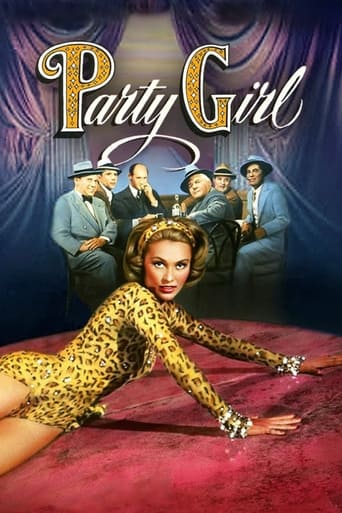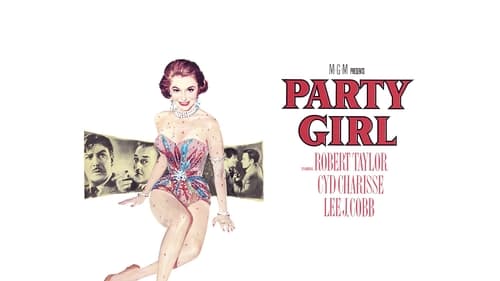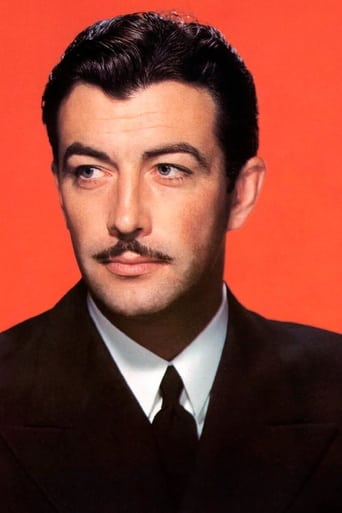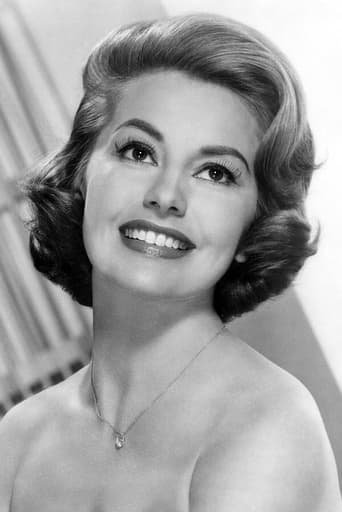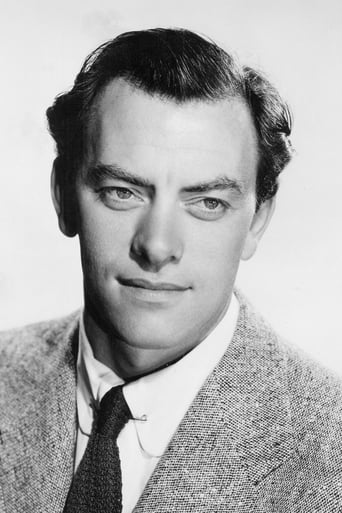GamerTab
That was an excellent one.
MoPoshy
Absolutely brilliant
Rio Hayward
All of these films share one commonality, that being a kind of emotional center that humanizes a cast of monsters.
Erica Derrick
By the time the dramatic fireworks start popping off, each one feels earned.
masonfisk
Not to be confused w/the Parker Posey starrer from the 90's, this rare color noir from the 50's shot in widescreen & directed by Nicholas Ray concerns a mob lawyer finding love & vowing to try one more case & then head for the hills but his boss comes in the guise of Lee J. Cobb, who definitely won't take 'no' for an answer. With a rare dramatic turn by Cyd Charisse (she does dance here but there's definitely some meat on the bone part-wise) the tale has its share of crosses & double crosses but it really is entertaining as heck w/a great star turn by Robert Taylor who's all control & menace. Worth a look!
davidcarniglia
Really a stunning production. The use of color, especially during the dance sequences, was mesmerizing. It seems odd to say that about what is essentially a film noir, but the fireworks of sets and costumes make Party Girl unique.Still, it takes at least an hour for the plot to get rolling. Then the sociopath Cookie suddenly puts Robert Taylor's character in jeopardy; and Taylor isn't in the clear until the last scene. All the while we're left wondering if Cyd Charisse's character is going to be doused with acid. Fortunately, the prosecutor comes up with a clever strategy to force Lee J. Cobb's hand. It would seem obvious, though, that Vicki (Cyd Charisse) will be abducted by Angelo's (Cobb's) goons. Also, after Taylor's released from jail and finds Cobb, why would the police launch an all-out assault on the building, since Taylor could easily get killed too? The fact that he had a sentimental talk with the cops at the very end shows that they were on the same side.The movie almost lost me with the side-trip to Europe. What was the purpose of Taylor's having an old injury that needed surgery anyway? If we had gone directly from Taylor's romance with Charisse right to the complications with Cobb and Cookie we would have lost nothing. We would've been spared the rare on-location driving scene from the doctor's office in which (as noted in the Goofs column) all the other cars are from the 1950s.Which leaves me wondering: why the movie was set in the 30s?
There were still plenty of ruthless gangsters to worry about in 1958. And, well, why not make Cobb an Irish gangster? He looks about as Italian as a Viking. Taylor's plea to Cobb that, despite all his bravado, the gangster is really a decent guy, who wouldn't stoop so low as to disfigure a woman, is full of tension. It's clear that Cobb is fascinated by Taylor, almost spell-bound; but never has the courage to stop striking out against his perceived enemies. Except for that well-written scene, though, Taylor's performance isn't very nuanced, not even as much as Cobb's. The fact that Taylor's Farrell is married has almost no bearing on the plot. That would be strange in any era, even more so in tbe 30s or 50s. A strange, awkwardly-paced, but extremely watchable movie. Charisse's dancing is great stuff, and that nightclub just glows beautifully. Cobb is at his caged-animal best, and there's plenty of wild gun-play. Party Girl is definitely worth looking at.
JohnWelles
The last film noir I saw was "Party Girl" (1958), directed by Nicholas Ray and stars Robert Taylor, Cyd Charisse and Lee J. Cobb.The screenplay (by George Wells) is hardly anything unusual: Lawyer Thomas Farrell (Taylor) has made a career of defending gangsters and crooks in trials. But when he meets showgirl Vicki Gaye (Charisse) at a mob party held by racketeer Rico Angelo (Cobb) that he starts to come out of his shell. Farrell tries to quit, but Rico, whose partner is going to be indicted and needs Farrell more than ever, threatens to hurt Gaye badly if he quits.The rather passé script, however, is enlivened to tremendous effect, not just by Jeff Alexander's lush, Jazzy score, and Robert J. Bronner's vibrant cinematography, but cult director Nicholas Ray brings a measured grace to the proceedings that really lifts the motion picture out of the ordinary. Robert Taylor is very good as the lawyer but Lee J. Cob, as a Capone like mobster chews up every scene he's in with vigour. Although Chaisse hasn't much to do and John Ireland is slightly two dimensional, this is a classy, exciting film noir deserves to be ranked among Ray's best.
artihcus022
''Party Girl'', Ray's final film for a major Hollywood studio(after this he worked with independent producers) is a highly baroque work. Screechingly mannerist in places, occasional head-first dives into camp but also remarkable instances of poetry and subtlety and a highly charged social portrait. It is a very discordant work which is to say that it deliberately skewers audiences expectations of a genre film by working as a genre film but stylized in a manner that the clichés and conventions look highly abstract, not unlike a film by Douglas Sirk.''Party Girl'' is shot in CinemaScope and Metrocolor, is produced by Joe Pasternak who was in charge of the second-tier MGM unit. The Leonine studio had by the mid-50's devolved into an organization of penny-pinchers and according to Ray, the only reason this film got made was because it's backers wanted to get rid of it's two stars...Cyd Charisse and Robert Taylor so as to exhaust their run of contracted films as quickly as possible. This explains the fact that more than ''Johnny Guitar''(with it's superlative cast of actors), ''Party Girl'' is the closest Ray came to make a B-Film. The storyline is a standard-issue crime drama and it is by a safe distance the most generic of Ray's major films.That it's still a major film is for me little doubt. Though lacking the strength of his early crime films and his 50's melodramas, ''Party Girl'' is still a deeply compelling film about the universality of compromises in society. The title ''Party Girl'' is essentially a slang for prostitute or for being under someone else's thumb. It refers to Cyd Charisse's character Vicki Gaye, a showgirl who works part-time as escort to various underworld types alongside other gals who work at the ''Rooster Folliers''(no joke). But it also includes mob lawyer Tommy Farrel(Robert Taylor) and applies to everyone else.Ray's distaste for plot apparent in all his films is full in abundance here as the generic outline of this story of crooked lawyer turned straight through the power of love takes on several asides. Like the one-scene appearance of a fellow showgirl who's waiting for her man and whose depression, Vicki stifles as a result of habit and accord over the years. The scene where she walks into her roommate's bathroom and finds her swimming literally in a pool of her own blood in a bath-tub is one of Ray's most embedded images even if(in accord with then censorship) the image lasts only a few micro-seconds before a quick fade-away. Much of the secondary section of the film centers on Tommy's relationship with Rico Angelo(Lee J. Cobb in a towering performance) and there's very little plot driving their very powerful scenes. Tension arises from flaming egos by a mob underling played by John Ireland over Tommy's relationship with Vicki.The film's sense of decor and colour is what we'd call now Fassbinderesque. It's pictorially fascinating and the colours are very eye-catching but the underlying design behind it is a sense of decadence of vulgarity. This reflects perhaps that the underlying subtext of this film is less about gangsters than about Hollywood. With Lee J. Cobb's mix of charisma(like Vito Corleone in ''The Godfather'') and crass vulgarity(like Joe Pesci in his films with Scorsese) stand-in for many studio heads of that period and the two musical interludes(numbers is the wrong word for it) by Cyd Charisse while visually striking is poorly choreographed and seems like a parody of the dying MGM Musicals.''Party Girl'' is a reflection ultimately of what are the results when a great artist and a few good actors are working with conventional plots can achieve. It's a work that's of it's own kind. Not a gangster film entirely, mostly a Film Noir though in colours, visually creative but mostly functional. The decor of the film makes it's genre trappings apparent and obvious revealing and critiquing it's functions yet the scenes between Taylor and Charisse are very much played straight conveying genuine compassion between two characters who have long lost their innocence and are merely doing their best to survive and find a semblance of happiness, a happiness that's threatened not only by the mob but also by the cops who want to use them to catch the bad guys(which has much benefits for their own political careers).What may put off most fans of Nicholas Ray is the graphic violence of the film which is quite unexpected and strong for a film of the 50's. Plenty of bloodletting is on display on this film...of course Ray would say "that's not blood...that's red."
